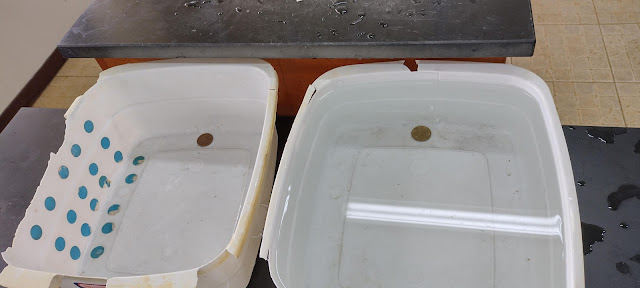Reflection and refraction
Monday was a holiday this week, thus Wednesday was used to introduce reflection and refraction. I opted to use the laser to demonstrate diffuse and specular reflection. Then I used the water tanks to demonstrate refractive effects. This term I included a hand waving introduction to n₁sin₁=n₂sinθ₂. After demonstrating refraction through a prism, I covered convex lenses and image formation. The class wrapped up with a visit to a fish tank.
The class opened with an introduction to the coin in the basin. I should also introduce the disappearing test tube, but I need a heavy vegetable oil to pull that off.
This laboratory, while basic, continues to serve its purpose. At this point in the term the students are able to render their own mathematical models, and yet there is a naivety to their models, such as o₁ ~ i₁ which lacks any degrees of freedom and has a slope locked in at one. Thinking mathematically is far harder than one who can think mathematically might imagine.
A rainy Friday prevented being able to go out and look for a mirage. Along with some mirage videos, I did do a demonstration of the disappearing test tube. Turns out the smallest test tubes, which have a plastic-like feel, did not work well. The glass test tubes worked the best. The palm oil, while cheap and readily available, was perhaps suboptimal. Lighting also plays a role - avoid back lighting. I used a mix of 600 ml and 400 ml beakers, the oil was a liter bottle of palm oil.

























Comments
Post a Comment